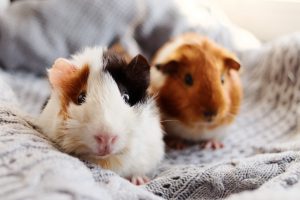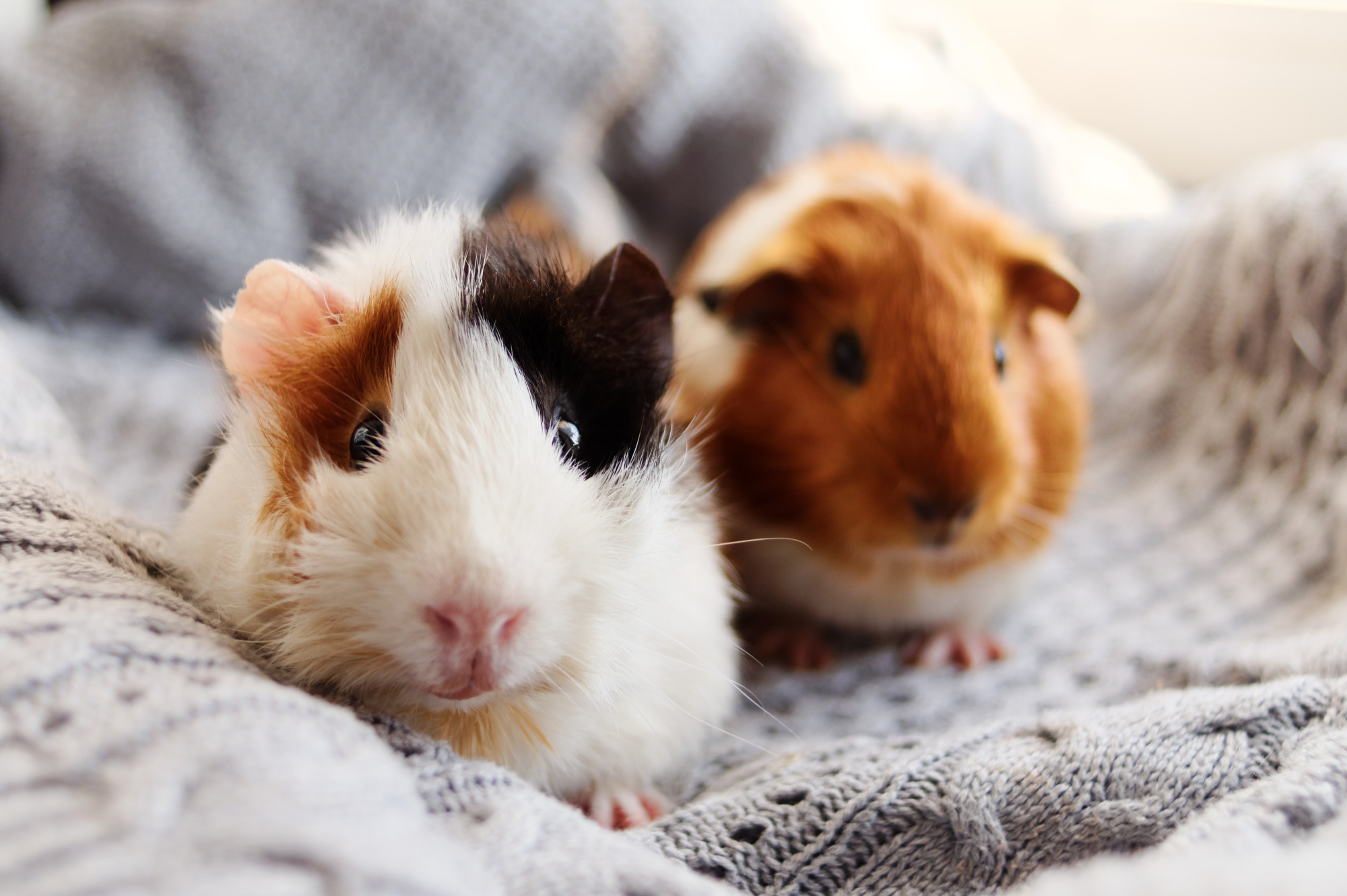Bringing new guinea pigs to life is no easy job. About 20% of guinea pig mothers die while giving birth, and complications from pregnancy are common.
With this in mind, if you’re taking care of a pregnant guinea pig or want guinea pigs to mate, there are things you can do to help keep your guinea pigs healthy and happy.
You might have some questions. How do you know when to breed guinea pigs? How does pregnancy work? How do you take care of baby guinea pigs?
Keep reading for an overview of everything you need to know about guinea pig breeding.

Contents
- 1 When Do Guinea Pigs Mate?
- 2 What Are the Risks of Breeding?
- 3 What Is the Pregnancy Length?
- 4 What Diet Is Best for a Pregnant Guinea Pig?
- 5 How Do You Care for the Offspring?
- 6 When Should You Keep Males and Females Separate?
- 7 When Should You See a Veterinarian?
- 8 Know When to Breed Guinea Pigs to Keep Them Healthy and Safe
When Do Guinea Pigs Mate?
Timing is important when it comes to the mating of guinea pigs.
Both male and female guinea pigs are ready to mate 2-3 months after they’re born. While they’re able to mate even earlier than this, they should wait until they’ve reached 2 months of age before reproducing.
A female guinea pig’s fertile cycle lasts about 16 days, but she’s only able to get pregnant for roughly 8 hours a day, usually at night. These cycles continue throughout the year.
A guinea pig has an average of 5 litters each year (but can become pregnant 2-8 times per year!).
What Are the Risks of Breeding?
Pregnancy and birth can be dangerous for female guinea pigs, which is why it’s important to pay attention to the age of the potential mother.
When a female guinea pig is young, her pelvis separates to give birth to the piglets. Once the female ages several months, her pelvis begins to merge together, making it difficult to give birth safely.
If a female becomes pregnant after she’s 7-8 months old, there’s a high risk of complications. Once the pelvis is fused, a Cesarean section is needed to deliver piglets, and the mother may have other issues that are life-threatening.
If you’re going to breed guinea pigs, make sure the mother is only 3-6 months old to keep her healthy and safe.
What Is the Pregnancy Length?
A guinea pig pregnancy lasts 59-72 days, with the average being 63 days.
When it’s time for the mother guinea pig to give birth, the main sign to watch out for will be her pelvis. About a week beforehand, her pelvis will start to widen, and this is how you’ll know she’s almost ready to give birth. An hour before she delivers, her pelvis will be 1 inch wide.
If everything goes according to plan, the delivery happens quickly. Each piglet takes roughly 5 minutes, with the whole delivery done in about 30 minutes.
On average, a female guinea pig will have 3 piglets, but birthing anywhere from 1-6 piglets is normal too.
If you’re not sure whether your guinea pig is pregnant or not, keep an eye on her abdomen. If she starts gaining lots of weight in this area (with her belly even doubling in size), this is a good sign she’s pregnant.
What Diet Is Best for a Pregnant Guinea Pig?
A guinea pig who is about to be a mother needs more water and nutrients than normal.
Feed the guinea pig foods packed with vitamin C and calcium to keep her healthy and strong. Kale, cauliflower, broccoli, and cabbage are great options. Healthy fruits are safe for the guinea pig, and alfalfa is a vital source of nutrients too.
Don’t worry if your guinea pig is eating more than usual; this is normal! Pregnant guinea pigs often eat as much as three times their normal amount. Offer fresh water regularly, as she’ll also be drinking more than usual.
How Do You Care for the Offspring?
Once the piglets are born, they’ll have teeth and fur and will be able to open their eyes and run around. Avoid touching or moving the mother and piglets for the first full day after they’re born, giving the mom time to feed and groom her babies.
Even though baby guinea pigs can eat guinea pig food after being born, their mother will nurse them for their first two weeks.
If there are male piglets, keep them with their mother for the first two weeks and then move them to a separate enclosure. This keeps the small males from mating with the females (including the mother!).
Make sure your guinea pigs have plenty of space and sources of food while giving them time to adjust to the changes.
When Should You Keep Males and Females Separate?
It’s most important to keep the pregnant guinea pig away from males right before, during, and after she gives birth.
This is to keep the female from becoming pregnant again while nursing. She’ll need time to recover from delivering the piglets, and she’ll also need to nurse her babies away from other guinea pigs.
Keep in mind that a female guinea pig can become pregnant again right after giving birth. If you have both male and female guinea pigs and you don’t want them to mate, it’s best to keep females and males in separate guinea pig cages.
When Should You See a Veterinarian?
If your guinea pig’s pregnancy goes smoothly, you may not need to visit the veterinarian at all! But there are a few things to watch out for to make sure your guinea pig is healthy.
If your guinea pig is more than 6 months old, it may be necessary to visit the vet to check up on her pregnancy. If the pregnancy is lasting more than 70 days, bring your guinea pig to the veterinarian to make sure everything is okay.
Keep an eye out for any changes in activity or appetite during the pregnancy to make sure the guinea pig is doing well.
Know When to Breed Guinea Pigs to Keep Them Healthy and Safe
The main thing to remember is that timing is everything. Know when to breed a female guinea pig to ensure a smooth and safe pregnancy.
With the right diet, exercise, and care, guinea pigs and their offspring can thrive.
Did you find this article interesting? Check out the rest of our blog for even more pet-friendly content.



